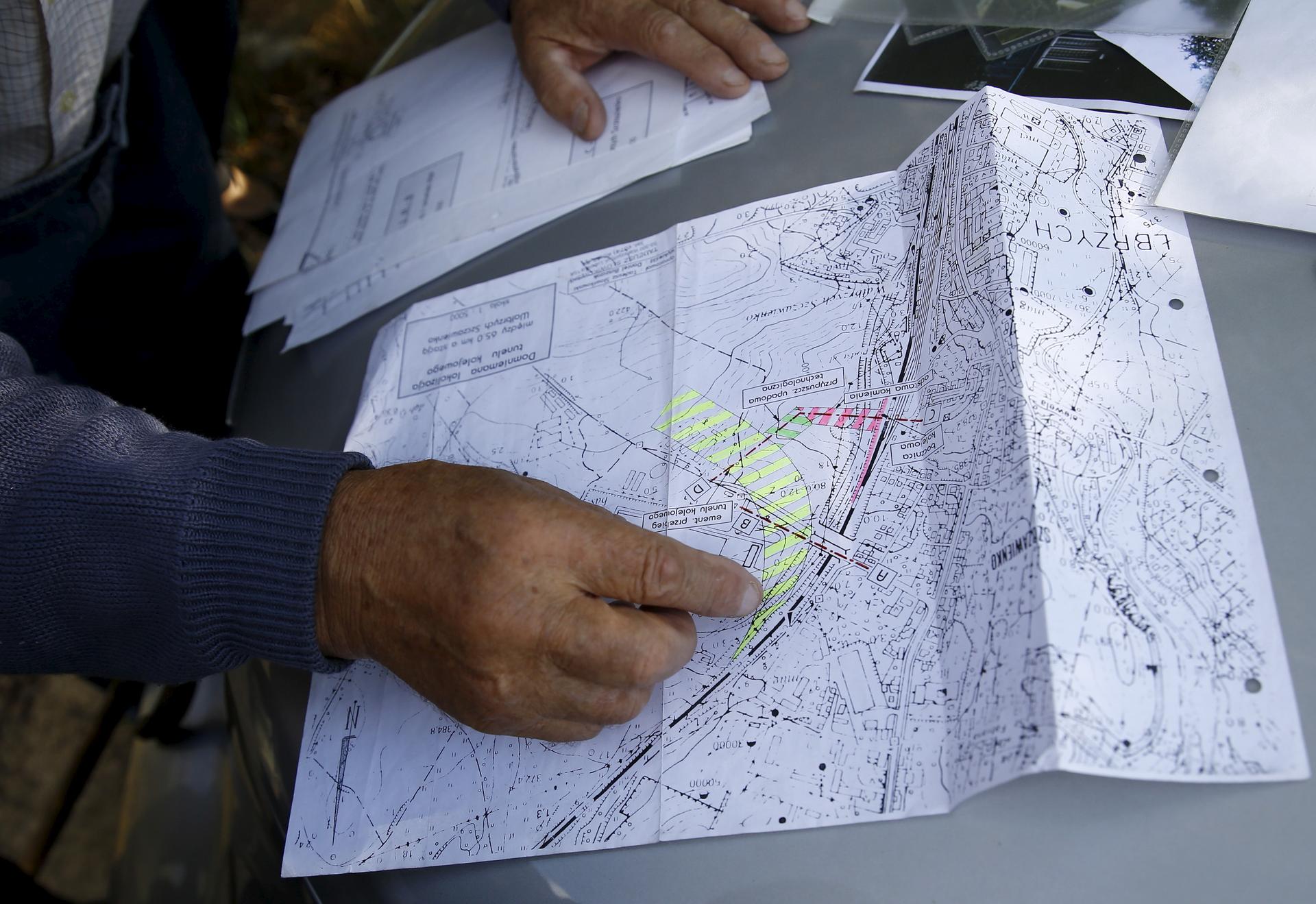Nazi ‘gold train’ spurs another treasure hunt in Poland
Treasure hunters on Friday launched their search for a lost Nazi gold train allegedly loaded with loot and buried in southwestern Poland, despite there being no scientific evidence it exists.
"The train isn't a needle in a haystack. If it's there, we'll find it," project spokesman Andrzej Gaik told AFP.
The story sparked global media frenzy last August when two men claimed to have discovered an armoured Nazi-era train using ground-penetrating radar near the city of Walbrzych.
At the time, Piotr Koper of Poland and German national Andreas Richter said they had discovered several train carriages measuring 320 feet buried 26 to 28 feet underground.
They said they believed the contents were mostly weapon prototypes, though local legend spoke of artwork, jewels and gold stolen by the Nazis.
The Nazis made prisoners of war dig a network of tunnels in the area, and some locals have claimed the Germans tried to spirit the gold away as Russia's Red Army closed in.
So far there has been little to back up the claims, with geologists from Krakow's prestigious AGH University of Science and Technology finding no evidence of the train's existence during tests run in December 2015.
Professor Janusz Madej said at the time he was "100 percent sure there is no train … maybe a tunnel" based on magnetic, gravimetric and geo-radar studies.

Digging starts Tuesday
It has done little to dampen the treasure hunters' enthusiasm.
"Even if we find a tunnel, that'll also be a success. The train could be hidden in it," Gaik said on Friday.
As the search began, Koper said he hoped to have answers within a week.
"It should all be clear by Thursday" next week, he told Poland's TVP public news channel as his team began clearing the area of vegetation.
He said they would sweep the area with geo-radar on Monday before diggers move in on Tuesday.
"We'll dig down [19 feet] in three areas along a [300-foot] stretch of the old railway tracks," Gaik said.
News about the alleged discovery of the gold train made headlines around the globe last year, triggering an influx of treasure hunters to the site.
The intrigue has been further fueled by the site's proximity to a massive network of secret underground tunnels built by the Nazis, some of which are around the massive Ksiaz Castle, where legend has it the Third Reich stashed looted valuables.
Treasure hunters on Friday launched their search for a lost Nazi gold train allegedly loaded with loot and buried in southwestern Poland, despite there being no scientific evidence it exists.
"The train isn't a needle in a haystack. If it's there, we'll find it," project spokesman Andrzej Gaik told AFP.
The story sparked global media frenzy last August when two men claimed to have discovered an armoured Nazi-era train using ground-penetrating radar near the city of Walbrzych.
At the time, Piotr Koper of Poland and German national Andreas Richter said they had discovered several train carriages measuring 320 feet buried 26 to 28 feet underground.
They said they believed the contents were mostly weapon prototypes, though local legend spoke of artwork, jewels and gold stolen by the Nazis.
The Nazis made prisoners of war dig a network of tunnels in the area, and some locals have claimed the Germans tried to spirit the gold away as Russia's Red Army closed in.
So far there has been little to back up the claims, with geologists from Krakow's prestigious AGH University of Science and Technology finding no evidence of the train's existence during tests run in December 2015.
Professor Janusz Madej said at the time he was "100 percent sure there is no train … maybe a tunnel" based on magnetic, gravimetric and geo-radar studies.

Digging starts Tuesday
It has done little to dampen the treasure hunters' enthusiasm.
"Even if we find a tunnel, that'll also be a success. The train could be hidden in it," Gaik said on Friday.
As the search began, Koper said he hoped to have answers within a week.
"It should all be clear by Thursday" next week, he told Poland's TVP public news channel as his team began clearing the area of vegetation.
He said they would sweep the area with geo-radar on Monday before diggers move in on Tuesday.
"We'll dig down [19 feet] in three areas along a [300-foot] stretch of the old railway tracks," Gaik said.
News about the alleged discovery of the gold train made headlines around the globe last year, triggering an influx of treasure hunters to the site.
The intrigue has been further fueled by the site's proximity to a massive network of secret underground tunnels built by the Nazis, some of which are around the massive Ksiaz Castle, where legend has it the Third Reich stashed looted valuables.
The story you just read is not locked behind a paywall because listeners and readers like you generously support our nonprofit newsroom. If you’ve been thinking about making a donation, this is the best time to do it. Your support will get our fundraiser off to a solid start and help keep our newsroom on strong footing. If you believe in our work, will you give today? We need your help now more than ever!